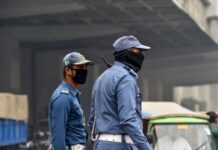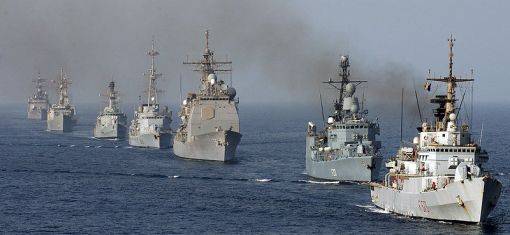“Ours is a world of nuclear giants and ethical infants. We know more about war that we know about peace, more about killing that we know about living.” – Omar N. Bradley
Second strike capability refers to a state ability to respond to a nuclear attack with a retaliatory strike, even after facing an initial nuclear attack. This is considered vital for nuclear deterrence, as it prevents an opponent from attempting to win a nuclear war through a first strike. As of now, Pakistan’s second-strike capability represents an important aspect of its nuclear deterrence strategy, particularly in the context of strained relations vis-a-vis India. The assessment reveals both strengths and weaknesses that affect its effectiveness in deterring potential threats. A critical role in deterring enemy from launching a first strike. This deterrence factor contributes to the stability of the region by preventing aggressive activities that could lead to nuclear escalation.
Pakistan’s second strike capabilities and incapabilities. Pakistan has developed the Babar-3 submarine-launched cruise missile, with a range of 450 km, enhancing its second strike capability by enabling it to attack Indian coastal cities. Pakistan has achieved a nuclear triad comprising land, air and sea nuclear capabilities that enhance its second strike capability and overall deterrence strategy. While Pakistan has converted some of its conventional submarines to carry the Babar-3 cruise missile, the country lacks nuclear powered missile submarines (SSBNs), considered crucial for a credible second strike capability. Pakistan’s reliance on modified conventional submarines raises concerns about their survival, low noise and ability to go unnoticed, which could undermine the credibility of its second-strike capability. The monarchy of nuclear command, control, communications and intelligence (NC3) poses the risk of accidental release of nuclear weapons and calls into question the continued deterrence against India. Ballistic missile submarine to effectively deter the enemy and counter India’s naval advances. Although Pakistan has made progress in developing its second strike capability, it faces a number of limitations, including the lack of advanced submarine technology, strong command and control systems, and the need to have a nuclear missile submarine to enable a credible second strike capability.
Pakistan’s second strike capability compare to other countries Pakistan currently lacks nuclear powered ballistic missile submarines (SSBNs), which are considered essential to a credible re strike capability. Countries like India have developed the INS Arihant, giving them assured re strike capability and improved survivability. However, other nuclear armed states have longer range missiles and more advanced capabilities. For example, India’s Agni-V ballistic missile has an official range of 8,000 km, which is a longer range than Pakistan’s current missile capabilities. Countries with more established nuclear weapons, such as the United States, Russia and China, have advanced nuclear capabilities, including a variety of delivery systems, advanced command and control infrastructure, and robust nuclear triads. Pakistan’s re strike capability, even if it materializes, may not be as comprehensive or technologically advanced as that of the major nuclear powers. Pakistan’s strategic depth and limited land area have been highlighted as a factor that makes the navy’s nuclear technology essential to its survival, especially against possible first strikes. Pakistan has made progress in developing its re strike capability, particularly with the Babar-3 cruise missile, but lags behind other nuclear powers in terms of nuclear submarines, missile range, technological advances and depth of survival. It will be important for Pakistan to close these gaps in order to strengthen its deterrence posture and ensure a stronger re strike capability comparable to that of other countries with advanced nuclear capabilities.
Pakistan’s MIRV(Ababeel) vs Indian BMD system comparision and deterrence between these two states. The comparison between Indian Ballistic Missile Defense (BMD) and Pakistan’s Multiple Independently Targetable Reentry Vehicle (MIRV) programs reveals a strategic dynamic in South Asia. India’s Russian oriented S400 system aimed at intercepting and destroying incoming ballistic missiles, poses a challenge to Pakistan’s nuclear deterrence capabilities. The development of MIRVs by Pakistan is a response to India’s BMD system, as MIRVs can potentially overwhelm or dodge missile defenses, making it difficult for interceptors to accurately target and destroy all incoming warheads. This technological competition between Indian BMD and Pakistani MIRVs reflects a broader arms race and strategic rivalry in the region, impacting the balance of power and stability between the two nuclear neighbors. Pakistan has adopt a strategy of full spectrum deterrence to counter India’s conventional military superiority, which includes the threat of nuclear first use in a conventional conflict. This is driven by Pakistan’s fear of a repeat of the 1971 war where India split Pakistan in half. Pakistan’s nuclear posture and the threat of escalation has been “deterrence optimal” in preventing India from using conventional forces against Pakistan, despite India’s conventional military advantages. This has led to a stability instability paradox where the nuclear deterrence prevents major conflict but allows for lower level violence. However, Pakistan’s second strike capability remains a concern, as it lacks a credible nuclear powered submarine capability to ensure a reliable second strike option. This makes its deterrence posture less credible in the long run. India has sought to counter Pakistan’s nuclear threats through conventional options like “Cold Start” doctrine and surgical strikes. This has increased the risk of escalation and instability, as Pakistan may lower the threshold for nuclear use to deter India’s conventional actions.
The deterrence relationship between India and Pakistan remains tense and unpredictable, with both sides continuously trying to balance out each other’s capabilities. Stability depends on factors like strategic context, signaling, and crisis management, rather than just military capabilities, nuclear deterrence has played a vital role in the India Pakistan confrontation, but its stability remains fragile and subject to the dynamics of the evolving military and strategic landscape between the two rivals.






















